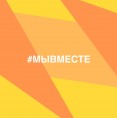- The opening of the Russian Championships Superfinals among men and women
- Photographers from the United States conducted a special photoshoot project in the Museum of Political History of Russia
- Meeting with German historians, social activists and museum colleagues
- «Reflections of the Revolution»
- Around the Winter Palace 1917
- Conference “Revolution in 1917 in Russia: Events and Conceptions, Consequences and Memory”
- “Life or Literature. Varlam Shalamov”
- “Horchposten 1941/ I Hear War”
“Life or Literature. Varlam Shalamov”
The exhibit, “Life or Literature. Varlam Shalamov,” is available in the Museum of the History of the Gulag—the first detailed and multifaceted museum project showing the fate of the writer. The works and photographs of Shalamov, narrating events in his life, appear in the form of whirling materials. These materials recreate the Gulag experience of the writer, shown metaphorically through the thoughtful, architectural decisions of the exhibit.
The creators of the exhibit, German curators Kristina Links and Wilfred F. Scheller, worked for a few years in close cooperation with the Russian museums and archives. The main exhibit narratives are documents from the foundation of V. Shalamov in the Russian State Archive of Literature and Art. Also represented are materials from the Government Literature Museum, the Museum of History of the Gulag, the International Memorial, the Memorial Museum of Varlam Shalamov in Vologda, and other collections. Nikolai Hasedkina did the installation of the works.
Shalamov is considered one of the strongest literary witnesses of the Stalin Gulag camps. “The Kolyma Tales,” stands beside the most famous works of humanistic response to the events of the 20thcentury, which marked the breakdown of the values of civilization. Shalamov considered Stalin’s and Hitler’s camps as one order—they are never identified as such, but it is necessary to compare and identify the perspective of such a comparison. The texts of Varlam Shalamov should be understood in the same sense as the works of such authors as Jorge Semprun, Primo Levi, Imre Kertesz, and Jean Améry with their testimonials about Auschwitz and Buchenwald.
It is no accident that the name of the exhibit overlaps with the title of the book, Literature or Life, by Jorge Semprun, the French and Spanish writer who strongly supported the condemnation of Stalinism in the wake of the condemnation of National-Socialism and Fascism. In his works, only such a “double memory,” comprehending the essence of the two dictators, would be able to unite Europe after surviving the horrors of the twentieth century. The writer calls for cultural attention to be paid to this “double memory,” directed first of all to the Germans, the people emerging from the domination of both totalitarian regimes. The project, “Life or Literature. Varlam Shalamov” is largely a response to his appeal.
The exhibit was first shown in September 2013 at the House of Literature in Berlin (the copyright holder of the exhibit). Until now it has been shown with great success in several cities in Germany and Italy, as well as Prague, Luxumbourg, Basel and Moscow.















